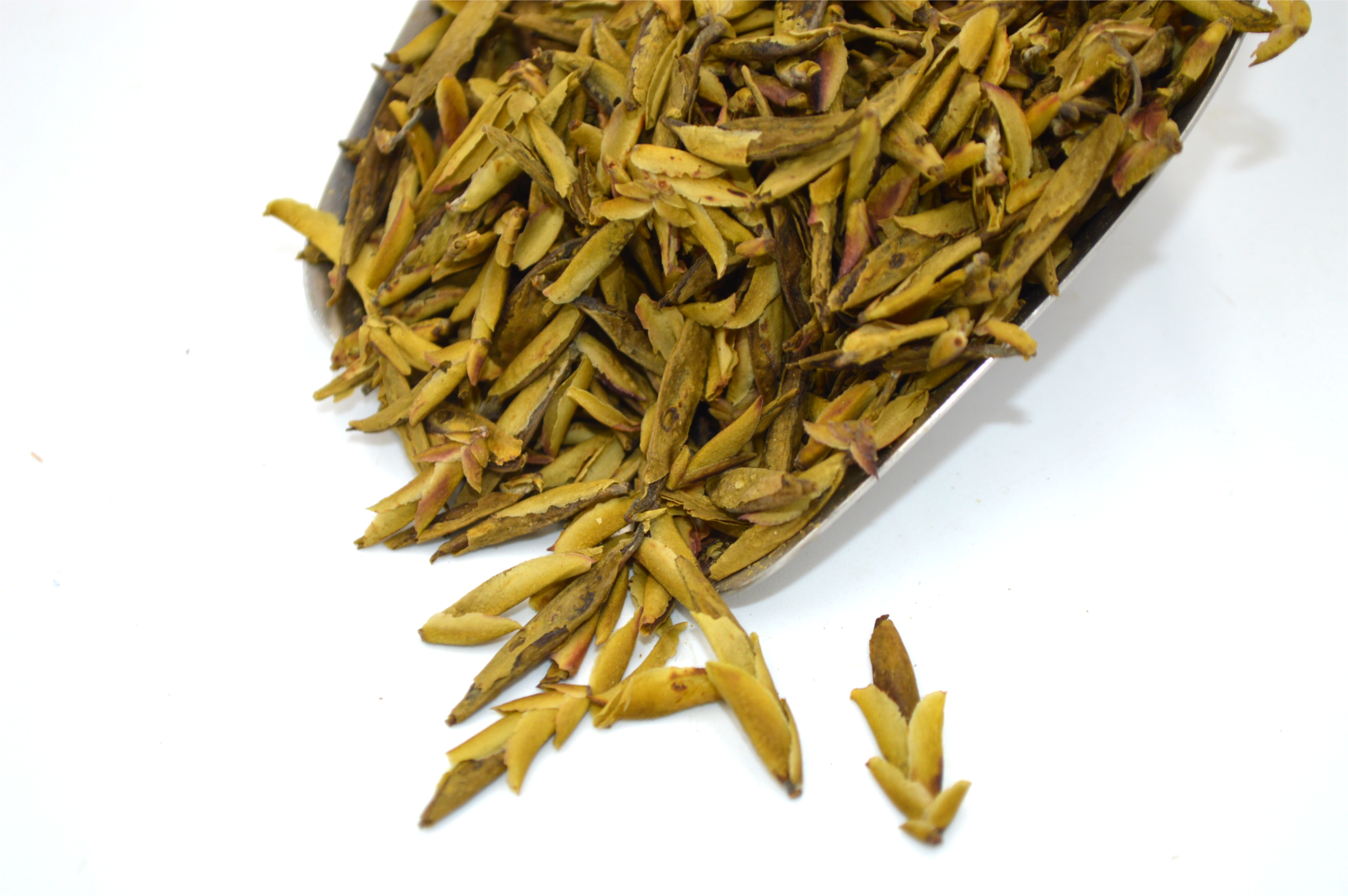Description
use 80-95℃ water and covered tea bowl or glass to brew 4 rounds, tea:water 1:80
- dry tea strip is flat and straight, silvery green color, densely covered white hairy and lustrous
- tea soup is apricot green, clear and brilliant
- the aroma is clean and high, flowery and tender fragrances
- the taste is sweet, mellow and fresh, brisk, sweet aftertaste
- the wet buds are tender green, fat and tender, even
Wudang Mountian is in Hubei Province, which has a long history of producing good tea: in the <History of Song Dynasty 宋史> recorded that in the Song Dynasty, Wudang Daoist Chen Tuan was fond of drinking tea; and in the Yuan Dynasty documents, Wudang daoists planted and produced tea by themselves; Wudang Qian Lin 骞林 tea had been paid tribute to the Ming Dynasty’s imperial court for 200 years, and in the <Collected Taoist Scriptures 道藏> , a picture called “Qian Lin Ying Xiang Tu骞林应祥图” described the grand occasion of harvesting, producing and paying tribute Qian Lin tea; the Qing Dynasty poems records that Wudang daoists brewed tea to receive guests.
Literatures of the Yuan Dynasty showed that Wudang daoists had planted tea trees on Wudang mountains. The author of the collection of poems <武当纪胜集>, Luo Tingzhen described in his poem <Sweet Tea 甜茶>, Wudang daoists’ self-cultivations started with bitterness, ended with sweetness and taste the flavour of immortals. The daoists there planted, harvested and processed tea locally by themselves, since this tea could make peoples’ tooth and cheeks sweet, it was called Sweet Tea “修真苦淡味仙灵,自种云腴摘玉英。亘古与人甘齿颊,春风百万亿苍生”. Another poem of this collection <Qianlin Tree 骞林树> mentioned, Qianlin tea trees had jadeite branches, azure stone leaves and unique divine trees’ roots “七宝林中上界奇,枝枝翡翠叶琉璃。若非大顶居天上,安得灵根独有之”. Qianlin tea tree is the ancient name of Wudang original variety, Camellia cuspidata (Kochs) Wright ex Gard., the poem collection is also the earliest literature recording Qianlin tea trees, it would be around 1313. Yuan Dynasty Wudang daoist, Liu Daoming had practiced in the Five Dragons Palace for a long time, he described the Five Dragons Reception Nunnery in his <武当福地总真集>. “七里峰,下即五龙接待庵。土花盈砌,山桂飘香,驻鹤迎宾,烹茶炊栗,一如仙家故事” Under the Qili Mountain Peak, the Nunnery is on the pilgrimage path to the Five Dragons Palace, daoists carried the Laozi’s tradition and cooked tea there to service guests “烹茶迎客”, what a fascinating immortals’ story “仙家故事”.









![DSC_1235[1]](https://i0.wp.com/shop.liu-tea-art.com/wp-content/uploads/2022/06/DSC_12351-scaled.jpg?fit=2560%2C1702&ssl=1)



















